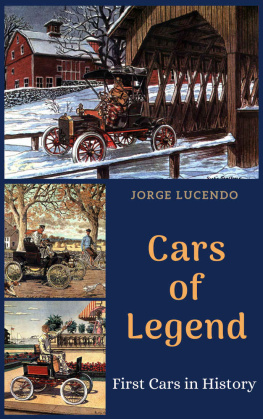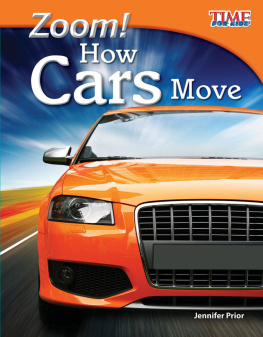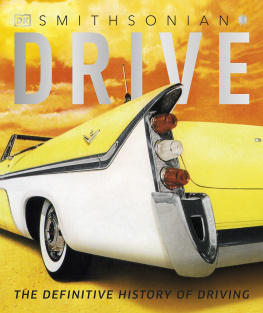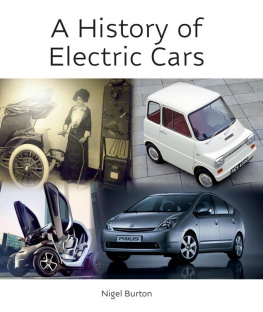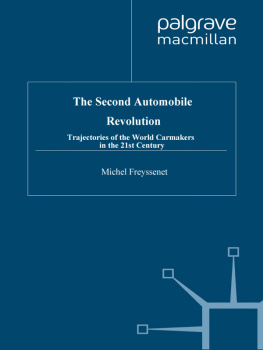History of the First Automobiles
The first "autonomous rolling machine" in history was built in China, back in the seventeenth century, in exactly the year 1678, the artifice of this 3-wheel steam car was the French Jesuit Ferdinand Verbiest (1623-1688).
In 1769, in France, the engineer Nicols-Joseph Cugnot (1725-1804) built the first self-propelled vehicle of which there is a historical record, which he called "fardier vapeur", whose meaning is "cargo wagon weighs -steam . It is a vehicle with 3 cart wheels, a front and two rear wheels, an approximate weight of 2,800 kg., And a front steam engine (where in a common cart would be the draft horses), with a huge coal tank Incandescent that evaporates to the water, pistons and rods that convert the linear movement produced by the vapor pressure, in rotational movement, through a mechanism that generates the rotation of the wheels and therefore the movement of the vehicle, which can reach a speed of up to 3.8 km/h.
In 1784 the British engineer and inventor, William Murdoch (1754-1839), built another steam car and the first made in Great Britain and in a country that was not France. It is a small tricycle to scale, about 30 centimeters high, with a small front wheel and two rear larger, a steam engine with boiler located in the back between the two wheels and a lever that works as turning rudder to move the front wheel. This vehicle had some new features such as a cylinder partially inserted into the boiler and with a safety valve to prevent explosions. Murdoch made the first public demonstration of a self-propelled vehicle in Great Britain, in the River Lounge of the King's Head Hotel in the city of Truro, Cornwall. Currently, this miniature vehicle is housed in the Thinktank Museum of Science in Birmingham.
In 1786, Murdoch built another model and according to some, in the 1790s came to build some model of human-sized size large enough to transport a passenger, although there is no record or historical document to confirm the latter. Murdoch did not have time to fully involve himself in his project since he worked for the steam engine company of Matthew Boulton (1728-1759) and the Scottish engineer James Watt (1736-1819) and did not have too much free time.
In 1786, the British William Symington (1763-1831), built the first large-scale steam car, that is, on a human scale, of Great Britain. It was a steam carriage, whose design resembled that of a horse-drawn carriage, since the steam engine was isolated from the rest of the vehicle (just like the horses of a common carriage), except that instead of Be ahead, was in the back, pushing the carriage in front of him. The traction of this vehicle was direct to the rear wheels, and was exhibited in the city of Edinburgh and in spite of having worked sometimes, it did not have a good performance and soon, the project was abandoned.
In 1794, the British inventor Richard Trevithick (1771-1833), he met the model on the scale of William Murdoch (it is noteworthy that they were neighbors and lived a few meters away between the years 1797 and 1798 in the city of Redruth, in the English region of Cornwall to the southwest of Great Britain). In 1799, inspired by the work of Murdoch, Richard Trevithick, built what is thought to be the first high-pressure steam engine, fully functional.
In 1801, Trevithick built Britain's first fully functional and well-performing car. He called it "Puffing Devil" (smoking devil) and on the eve of Christmas of that year, made a public demonstration, transporting six passengers from the city of Camborne, also in the English region of Cornwall, to the neighboring town of Beacon. During this experiment he was even driven uphill by the area of a hill.
The vehicle had a weight of 1,520 kg., And thanks to the greater performance of its high pressure steam engine and a single piston, it could reach a maximum speed of 14.5 km/h. and after a few more tests, this car A steam engine in the shape of a small locomotive (in fact it was a locomotive to walk on roads) was broken by passing through a ditch on a road. The vehicle was left in a kind of shelter, by mistake with the boiler still on, while the operators went to eat at a nearby pub. During all that time the water in the boiler evaporated completely and the machine started to burn and was finally destroyed. However, Trevithick did not see it as a serious problem and continued with more developments over the next few years (including the first steam railway locomotive).
The first Trevithick car was very uncomfortable to carry passengers and had an unpleasant aesthetic design. So in 1803 he built, along with the mechanical engineer and captain of English mines Andrew Vivian (1759-1842), who was his cousin and also partner, a carriage with cabin and seats to carry several passengers, which some consider as the first automobile designed especially to carry comfortably seated passengers, although others maintain that the vehicle of Symington of the year 1786, in spite of not having had a good performance, was the first automobile destined to the transport of passengers seated comfortably. But what is clear is that this Trevithick carriage, was the first car of good performance and fully functional. This vehicle had the shape of a carriage, but without horses but a steam engine with a boiler and tailpipe in the back. It had two large rear wheels of 2.40 m. in diameter, connected to the traction axle of the vehicle. It was sent to build in the carriages workshops of William Felton (1823-1909), in London and parts of the engine were manufactured in the city of Falmouth in the Cornwall region, from where they were transported to the workshops of Felton where they were assembled.
It was called "London Steam Carriage", although it was also known as "Puffing Dragon", or what is the same "Smoky Dragon", and was tested in a public demonstration , in a route of 16 kilometers through the streets of central London (which were closed especially for this experiment to all other types of traffic), carrying between seven and eight passengers at a speed of between 6 and 14.5 km/h.
The London Steam Carriage had a length of 4.90 meters by a width of 2.18 meters and a height of 3.45 meters. Its vacuum weight was 1,900 kilograms (1.9 tons). Its engine had a power of 3 HP (horse power) at 50 rpm, the transmission was done through separate driving gears on each of the rear wheels (the driver could choose transmission to one of the wheels or both). It had a range of 15 kilometers with 180 liters of water in the boiler tank and capacity for 8 passengers.
However, the London Steam Carriage proved to be quite uncomfortable for the passengers and unprofitable, since it was much more expensive to maintain and operate than a horse-drawn carriage, in addition to being quite similar in speed. Finally, during another experiment, the carriage ended up colliding with the bars of a house, so that the potential buyers and investors completely lost interest in this vehicle.
In 1805, the American engineer and inventor, Oliver Evans (1755-1819), built what was the first automobile in the United States. An amphibious steam car (the world's first amphibious vehicle) shaped like a ship to navigate in the water and wheels to walk the earth. This vehicle, in addition, had a rear propeller to navigate by fluvial waters. It was 9 meters long by 3.5 meters wide and weighing 17 tons (17,000 kg). Its engine could generate a power of up to 5 HP, (horsepower).
His only client was the Board of Health of the City of Philadelphia (Philadelphia Board of Health) that required him to dredge the sandbars in the shipyards of the city, for that reason he was called Oruktor Amphibolos. Finally, it was impractical due to its great weight, the problems of bending on land and the low efficiency of its engine, but it did serve to plant the idea in the United States, that it was possible in the future, the use of steam powered vehicles to transported by this huge country. Finally in 1808, as the Oruktor Amphibolos was not effective in the tasks of dredging, and scrapped. Evans, even, in 1812, described a few decades before the development of the North American railway network, in a publication of his, a futuristic image of how people were going to be transported from one side to the other one day, through a vast network of roads , in vehicles propelled by steam locomotives.

